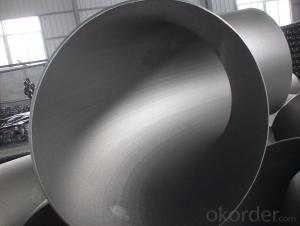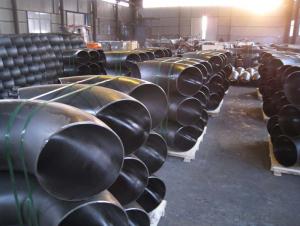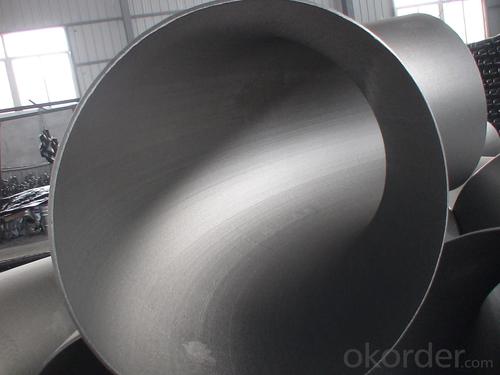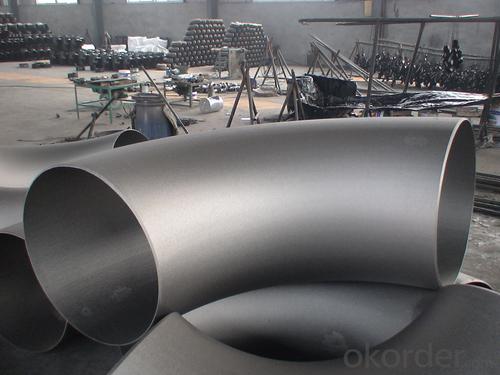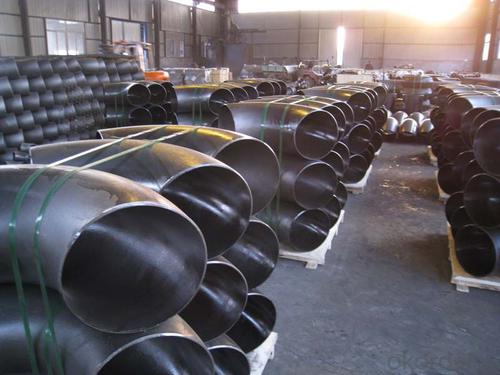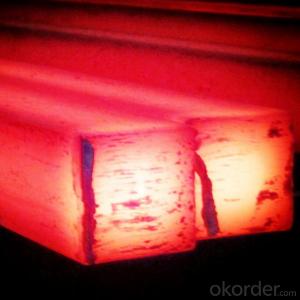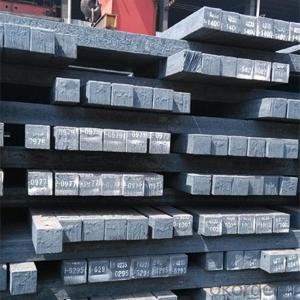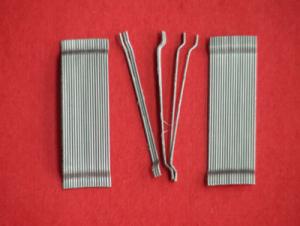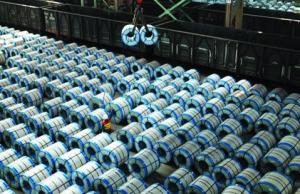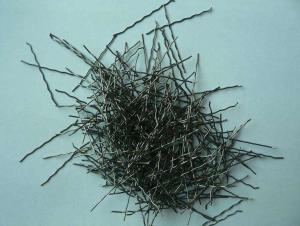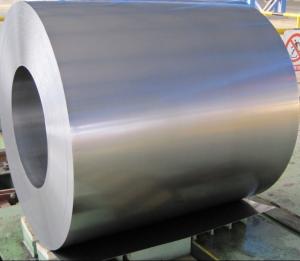Carbon steel pipe fittings TEE 1/2'' SCH40
- Loading Port:
- China Main Port
- Payment Terms:
- TT OR LC
- Min Order Qty:
- -
- Supply Capability:
- -
OKorder Service Pledge
OKorder Financial Service
You Might Also Like
Pipe fitting is the occupation of installing or repairing piping or tubing systems that convey liquid, gas, and occasionally solid materials. This work involves selecting and preparing pipe or tubing, joining it together by various means, and the location and repair of leaks.
Pipe fitting work is done in many different settings: HVAC, manufacturing, hydraulics, refineries, nuclear-poweredSupercarriers and Fast Attack Submarinescomputer chip fab plants, power plant construction and other steam systems. Pipe fitters (sometimes called simply "fitters") are represented in the USA and Canada by the United Association of Journeymen and Apprentices of the Plumbing and Pipe Fitting Industry of the United States and Canada.
Fitters work with a variety of pipe and tubing materials including several types of steel, copper, iron, aluminium, and plastic. Pipe fitting is not plumbing; the two are related but separate trades. Pipe fitters who specialize in fire prevention are called Sprinklerfitters, another related, but separate trade.
Materials, techniques, and usages vary from country to country as different nations have different standards to install pipe.
Elbow are an English alternative rock band consisting of Guy Garvey (vocals, guitar), Richard Jupp (drums, percussion), Craig Potter (keyboards, piano), Mark Potter (guitar, backing vocals), and Pete Turner (bass guitar, backing vocals). They have played together since 1990, adopting the Elbow band name in 1997, and have released six studio albums: Asleep in the Back (2001), Cast of Thousands (2003), Leaders of the Free World (2005), The Seldom Seen Kid (2008), Build a Rocket Boys! (2011), and The Take Off and Landing of Everything (2014). All of their studio albums, as well as B-sides compilation Dead in the Boot (2012), have placed in the top 15 of the British album chart and seven of their singles have placed in the top 40 of the British singles chart.
In 2008 Elbow won the Mercury Music Prize for their album The Seldom Seen Kid, and in 2009 they won the Brit Award for Best British Group In 2012 they released "First Steps", the BBC theme for the 2012 London Olympics
Specifications
Standard: ASTM A234 WPB, JIS, DIN, EN, GOST
Use for Oil, Gas, Subwatering act.
45/90/180 degree, LR/SR Elbow
ASTM A234 WPB ELBOW :
| ||||||||
| we are manufacturer for carbon steel pipe and fittings,like 45deg,90deg,180deg,L/R OR S/R,bend , | ||||||||
| equal or reducing tee, CON reducer, ECC reducer, pipe cap,flange. | ||||||||
| CON AND ECC REDUCER: CARBON STEEL,STAINLESS,STELL,ALLOY STEEL | ||||||||
| NOMINAL DIAMETER | BIG OD1 | SMALL OD2 | HEIGHT(MM) | |||||
| MM | SERIES A | SERIES B | SERIES A | SERIES B | 51-711 | |||
| 25*15--1500*1400 | 33.7-1524 | 32-1520 | 21.3-1420 | 18-1420 | ||||
| MATERIAL: A234WPB,A283,A105,A53,A106,API5L | ||||||||
| STANDARD: ASTM/ANSI,DIN,ISO,GB,JIS,BS ,GOST | ||||||||
| OTHERS: | ||||||||
| 1. Special design available according to requirement | ||||||||
| 2. All the production process are made under the ISO 9001:2000 strictly. | ||||||||
- Q: How is steel used in the manufacturing of appliances?
- Steel is commonly used in the manufacturing of appliances due to its high strength, durability, and heat resistance. It is used to construct the outer shells and frames of appliances such as refrigerators, ovens, and washing machines, providing a sturdy and long-lasting structure. Steel is also used in the internal components of appliances, including motors, heating elements, and various mechanical parts, ensuring their efficient and reliable operation.
- Q: How is steel wire rope used in elevators?
- Steel wire rope is used in elevators to provide the necessary strength and durability to support the weight of the elevator car and passengers. It is used as the primary load-bearing component, connecting the elevator car to the counterweight system and the hoisting machinery. This wire rope is designed to withstand high tensile forces and is crucial for ensuring safe and reliable vertical transportation in elevators.
- Q: How are steel products used in the construction of bridges?
- Steel products are commonly used in the construction of bridges due to their high strength and durability. They are used for various structural components such as beams, columns, and trusses, providing the necessary support and stability. Steel is also used for bridge decks, allowing for a smooth surface and facilitating the movement of vehicles. Additionally, steel cables and wires are often employed for suspension and cable-stayed bridges, ensuring the bridge's integrity and load-bearing capacity.
- Q: What are the advancements in steel product technology and materials?
- There have been several advancements in steel product technology and materials in recent years. One notable advancement is the development of high-strength steel, which has improved the structural integrity and durability of steel products. Additionally, there have been advancements in steel coating technologies, such as galvanizing and powder coating, which provide enhanced corrosion resistance and aesthetic appeal. Another significant advancement is the use of advanced manufacturing techniques, such as laser cutting and 3D printing, which have increased precision and efficiency in the production of steel products. Overall, these advancements have led to stronger, more durable, and aesthetically pleasing steel products that meet the ever-evolving needs of various industries.
- Q: What are the properties of tool steel for cutting applications?
- Tool steel is specifically designed for cutting applications due to its unique properties. It possesses exceptional hardness, wear resistance, toughness, and heat resistance. These properties allow tool steel to withstand high temperatures, maintain its sharpness, and resist deformation or chipping during cutting operations. Additionally, tool steel exhibits good edge retention and can be easily sharpened, making it an ideal choice for tools used in cutting applications.
- Q: How is steel used in the production of tools and machinery?
- Steel is widely used in the production of tools and machinery due to its exceptional strength, durability, and versatility. It is used to create various components, such as blades, gears, shafts, and frames, which require high levels of hardness and resistance to wear and tear. Steel's ability to be heat-treated and shaped into different forms makes it suitable for a wide range of applications in the manufacturing industry, ensuring the production of robust and reliable tools and machinery.
- Q: What are the properties of heat-resistant steel for high-temperature applications?
- Heat-resistant steel for high-temperature applications has several key properties. Firstly, it has a high melting point, allowing it to withstand extreme temperatures without deforming or melting. Additionally, it exhibits excellent strength and toughness at elevated temperatures, ensuring structural integrity under thermal stress. Moreover, heat-resistant steel possesses good oxidation and corrosion resistance, preventing degradation due to exposure to air or corrosive environments. Furthermore, it has low thermal expansion, reducing the risk of thermal distortion and ensuring dimensional stability. Lastly, it demonstrates good thermal conductivity, facilitating efficient heat transfer and distribution.
- Q: How is steel used in the construction of infrastructure projects like roads and bridges?
- Steel is commonly used in the construction of infrastructure projects like roads and bridges due to its strength, durability, and versatility. It is utilized for reinforcing concrete structures, such as bridges and highway overpasses, providing the necessary support to withstand heavy loads and traffic. Steel is also used in the fabrication of beams, columns, and other structural elements, ensuring the stability and integrity of the overall infrastructure. With its resistance to corrosion and ability to withstand extreme weather conditions, steel plays a crucial role in enhancing the longevity and safety of roads and bridges.
- Q: What are the uses of steel in the automotive aftermarket?
- Steel is widely used in the automotive aftermarket for various purposes. It is commonly utilized in the manufacturing of automotive parts such as engine components, suspension systems, body panels, and exhaust systems. Steel's high strength, durability, and corrosion resistance make it an ideal material for these applications, ensuring the longevity and performance of aftermarket products. Additionally, steel's versatility allows it to be easily formed and shaped into complex designs, providing automotive aftermarket manufacturers with the flexibility to create parts that meet specific requirements.
- Q: What are the different types of steel coatings?
- There are various types of steel coatings, including galvanized coatings, epoxy coatings, powder coatings, and organic coatings.
Send your message to us
Carbon steel pipe fittings TEE 1/2'' SCH40
- Loading Port:
- China Main Port
- Payment Terms:
- TT OR LC
- Min Order Qty:
- -
- Supply Capability:
- -
OKorder Service Pledge
OKorder Financial Service
Similar products
Hot products
Hot Searches
Related keywords
